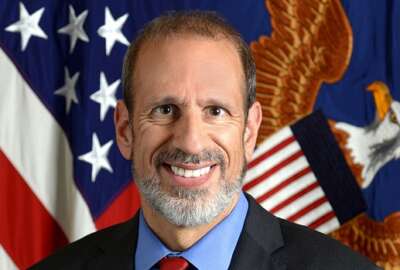Best listening experience is on Chrome, Firefox or Safari. Subscribe to Federal Drive’s daily audio interviews on Apple Podcasts or PodcastOne.
There are wide disparities in active-duty service member COVID-19 vaccinations depending on race, sex and even military occupation that could have effects on readiness in the future, according to the first scientific study on troops and coronavirus vaccines.
The study, published in the Defense Health Agency’s Medical Surveillance Monthly Report, found Black service members, women serving in the military, younger troops, and service members in lower ranks and with less education were not as likely to get inoculated.
“Vaccination is an important intervention to mitigate the threat of COVID-19 to the U.S. military,” the authors of the study wrote. “Significant disparities in vaccination by race, sex, and other factors exist in military populations. The U.S. military must continue to assess and address factors associated with COVID-19 vaccine hesitancy, including disparities, to ensure maximum force health protection against the virus.”
The study is the first quantitative look into disparities in who is getting the vaccine after the Defense Department could only provide anecdotal or localized evidence. The best numbers that DoD provided before the study came from Joint Staff Surgeon Brig. Gen. Paul Friedrichs, who told Congress in February that about one-third of service members were declining to get the shot.
To date, about 27% of service members have gotten their vaccine. The study does not quantify how many troops have declined to get the shot, but rather compares the number of vaccinated service members to nonvaccinated by demographic and infers likelihood to get the shot.
“Among both the entire active duty population and its healthcare subgroup, vaccine hesitancy among racial and ethnic groups mirror that which has been observed within the U.S. population,” the authors wrote. “This suggests that forces external to the U.S. military, such as interpersonal and societal factors, also contribute towards vaccine hesitancy among military service members, as has been suggested for other disease processes.”
Members of the Army were the least likely to get their vaccine; only 21% have done so. The Marines were 52% more likely to get the shot, the Navy 45% and the Air Force 15%. Data released by the Marine Corps in April found that 48,000 Marines declined to get the shot.
The study found that Black service members were 28% less likely to initiate vaccination than white counterparts, a trend that is also evident in the civilian world.
Women were 10% less likely than men to get the shot, and 20% less likely if they had previously been diagnosed with COVID-19.
Among occupations, healthcare providers and pilots had the highest rate of initiation. About 55% of healthcare providers are vaccinated and nearly 46% of pilots. On the other side of the spectrum, only 17% of service members working in motor transport have gotten the shot and 23% in repair and engineering.
It is important to note that from the time the vaccinations were available last December, until the end of the study in March, that not all service members were eligible the entire time. DoD prioritized service members in mission critical positions.
Still, the authors suggest that, “messaging and other outreach efforts should aim to reduce or eliminate vaccine hesitancy in general, with attention focused on reducing vaccine disparities. Vaccine declinations should be addressed, with further description of reasoning for declinations, as this would serve to better understand the most common behaviors and beliefs of key demographic groups.”
Last week, Dr. Terry Adirim, acting assistant secretary of defense for health affairs, said she was concerned about the amount of resistance in the military to the vaccine. In response to a question from Sen. Thom Tillis (R-N.C.), during a Senate Armed Services Personnel Subcommittee hearing about whether the president should mandate the vaccine, Adirim said:
“I appreciate that question. I never thought I’d have those words come out of my mouth. But this is something that’s been a concern for us in how do we encourage and engage with our service members for them to accept vaccination. It’s been tough and I think those who want vaccination have been able to get it.”
Adirim said DoD is using every avenue available from the installation level up to engage with those who are hesitant about the vaccine.
“What we’re finding is that even those who were in the earlier tiers of the prioritization scheme are slowly starting to accept vaccination,” Adirim said. “It’s now four-five months after we started vaccinating and I think a large proportion of our service members as well as other DoD beneficiaries have said, ‘You know what, I’d like to wait and see what happens.’”
Service members are not mandated to take the shot because it is only approved through emergency-use authorization.
Adirim said DoD is not currently considering making the vaccine mandatory.
Copyright
© 2024 Federal News Network. All rights reserved. This website is not intended for users located within the European Economic Area.

